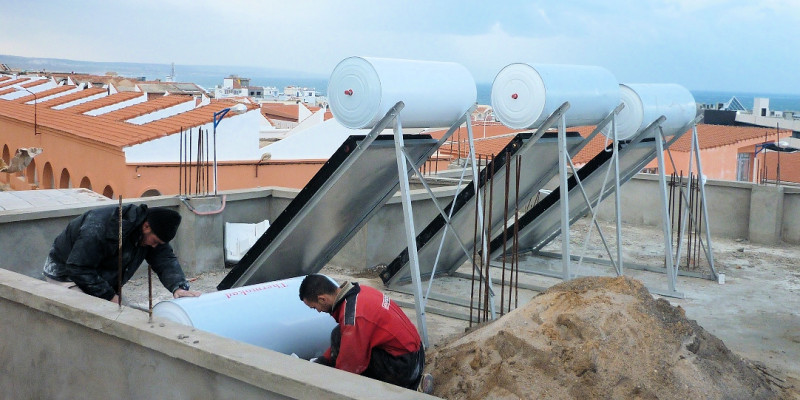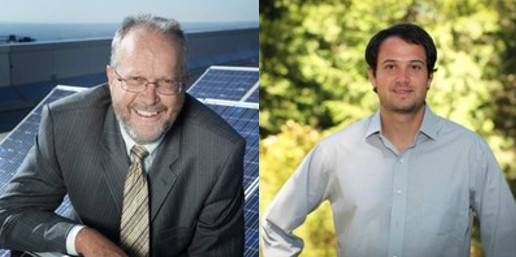Posted: September 10, 2021

Photo: 2EER, Algeria
With 57 % of the total solar heating capacity in operation globally, thermosiphon systems top the list of the world’s most used solar thermal technologies. At the same time, photovoltaic systems are also emerging as a real player for getting heat from the sun. Both technologies are rapidly evolving to include smart controls and better manufacturing and installation standards designed to improve their durability and performance. A new research project called Smart Solar Water Heating for 2030, set up by the IEA Solar Heating and Cooling Programme (IEA SHC), now focuses on the future of the solar hot water market and on the development and rollout of these two technologies in different regions around the world. Experts from the worlds of business and research are invited to attend the task’s first definition meeting, to be held online over consecutive days, on 23 and 24 September, in two sessions from 7 pm to 10 pm (Sydney Time). You can sign up for the workshop until 20 September by clicking on this link.
The new research platform was the brainchild of Ken Guthrie, Australian Representative on the IEA SHC Executive Committee, and Robert Taylor, Associate Professor in the School of Mechanical and Manufacturing Engineering at the University of New South Wales. Prof He Tao, the Chinese representation on the IEA SHC Executive committee, has joined with the Australians to lead the proposed task. “We will focus on the development path and best practices for two technologies which, we believe, are likely to play the biggest role in the solar hot water market in 2030 – solar thermal thermosiphon and photovoltaic self-consumption water heating systems,” said Taylor.

The initiators of the Smart Solar Water Heating for 2030 task: Ken Guthrie (left) and Robert Taylor, who both hail from Australia.
Photos: Personal collections
The challenge Guthrie and Taylor see is that many decentralised solar hot water systems are poorly designed or installed and the controls used for them have a way to go before they can be called 'smart'. Some questions the new task will address are:
- Which hot water technologies are the most appropriate now and in the future across the entire spectrum of economic development, for various climate zones around the world?
- What minimum performance and reliability standards are in place for these technologies and should be recommended?
- What types of smart thermosiphon systems and PV self-consumption water heaters are commercially available today?
- What sort of activities (e.g. training, R&D) will be needed to facilitate the rapid commercial manufacture and/or supply as well as the deployment of ‘smart’ water heaters in different regions around the world?
- What are the ‘lowest-carbon’ options for thermosyphon systems and photovoltaic self-consumption water heaters? (This may depend on a location’s solar resource level and seasonal variation and the GHG intensity of backup fuels.)
“All participants will have the chance to introduce their work, institution and services at the start of the September workshop,” noted Taylor. The group will then discuss the structure of the workplan along certain research topics predefined by the initiators, although these topics can also be adapted later on:
- Subtask A – State-of-the-art and operating environments in different regions
- Subtask B – Smart thermosyphon systems
- Subtask C – PV self-consumption and PV2Heat systems, including smart controls
- Subtask D – Training and standards
The Smart Solar Water Heating for 2030 Task is planned to commence in June 2022 and will run for a total of three years. So there’s still time for stakeholders to have their say on the scope of work. If you want to participate please contact your country’s IEA SHC representative and consider attending the September workshop to get in on the ground floor and help develop the joint workplan and to take part in the task.
Organisations mentioned in this article: